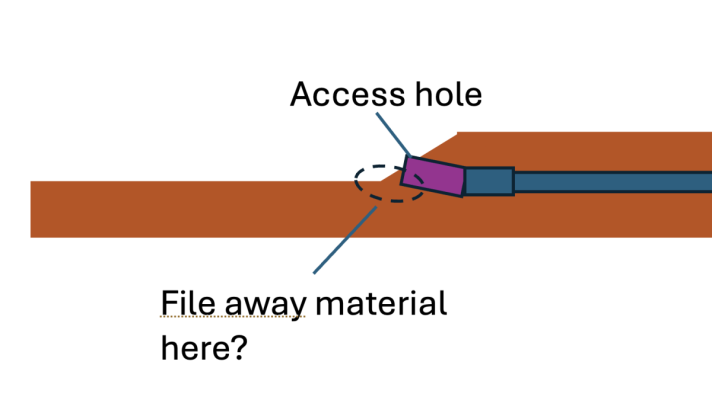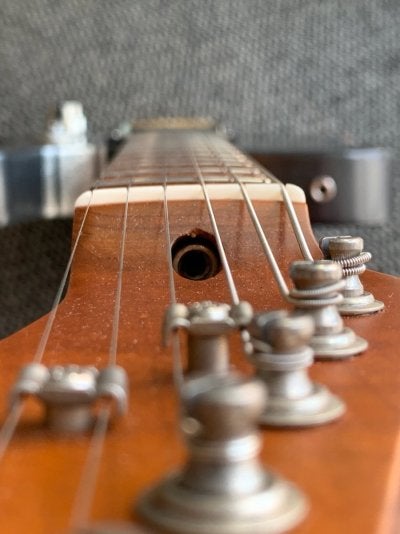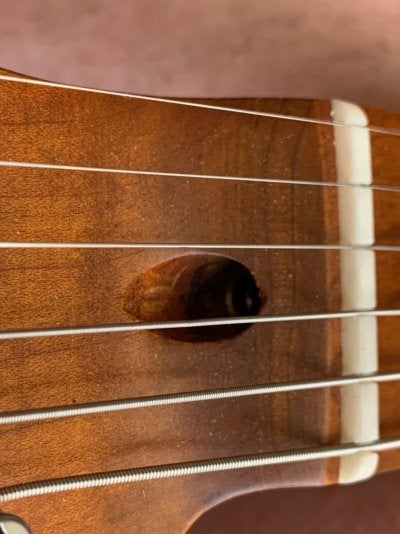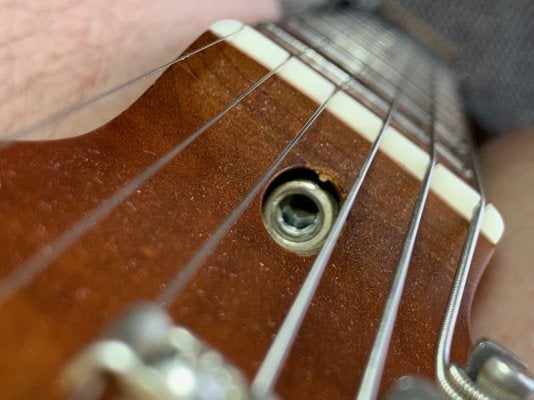Tristan____C
TDPRI Member
My partscaster build features a cheap, no-name neck from a well-known online auction site. I've a few buzzing issues, so trying to get the neck straight before identifying which frets are the cause. Here lies the problem.
Access to the nut is annoyingly difficult. I assume the nut is 4mm (a 3.5mm allen is too loose, 4.5mm doesn't go in). All the 4mm allen keys I have won't quite engage. I've attached a diagram of the issue and what I think is a solution.

The short side of an allen key won't engage as it clashes with the bottom of the access hole. The long side of an allen key (with the 'ball end') I'm struggling to get to engage - perhaps I've damaged the nut in all my attempts... Photos attached.
My idea was to use a dremel to file away the bottom 'lip' of the access channel to allow a closer-to-90deg approach to the nut.
Or get a allen key set with a very short short side...
Anyone see any issues with filing away some material?
Thanks,
Tristan
Access to the nut is annoyingly difficult. I assume the nut is 4mm (a 3.5mm allen is too loose, 4.5mm doesn't go in). All the 4mm allen keys I have won't quite engage. I've attached a diagram of the issue and what I think is a solution.

The short side of an allen key won't engage as it clashes with the bottom of the access hole. The long side of an allen key (with the 'ball end') I'm struggling to get to engage - perhaps I've damaged the nut in all my attempts... Photos attached.
My idea was to use a dremel to file away the bottom 'lip' of the access channel to allow a closer-to-90deg approach to the nut.
Or get a allen key set with a very short short side...
Anyone see any issues with filing away some material?
Thanks,
Tristan








